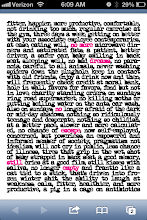The second one was by Jamie Goodrich, an associate professor here at Wayne State University, titled "Thomas More's 'englishe Tongue': Mary Bassett and the Politics of Sainthood." Goodrich basically talked about how Mary Bassett, Thomas More's granddaughter used her writing to authenticate More's reputation as a martyr, but her writing ended up functioning in two ways. She translated his works that he wrote before he was executed, but added her own authorial voice to them in the footnotes. This work was evidence of women's subordinate role in patriarchal society, but her "free translation" of some parts where she not only adds her own interpretation but leads her reader to it in the footnotes shows an attempt by Bassett to claim her own authorial voice in the process.
This reminded me a little bit of Burney's way of adopting Richardson's model to form her own text. Pamela and Evelina are vey similar in content and moral message. This is only one of many examples in the eighteenth century of a woman author's need to have a male author authenticate her text. in Bassett's case it is the reverse becuase she uses the male text to authenticate her own voice by slipping it in in ways that draw attention to the text. This was smart on her part becuase she accomplished two things at once: she reinforced her grandfather's reputation and created one for herself. It worked becuase as Goodrich points out, it is Bassett's version that they use in the TV show Tudors during Thomas More's near execution scene. The show also elaborates More's scene more than the other important Catholic martyr that was executed too (starts with an F....) becuase of Bassett's influence.
It is very interesting to look at the creative ways in which women authenticated themselves as authorial voices to break free from the silence that was expected of them...
Saturday, April 25, 2009
Subscribe to:
Post Comments (Atom)




No comments:
Post a Comment